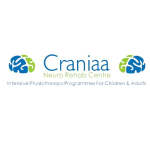Genetic disorders affect millions of individuals around the world, influencing growth, mobility, muscle strength, and overall physical development. Because these conditions originate from changes in a person’s genetic makeup, they often require long-term and multidisciplinary rehabilitation. Among the various supportive therapies available, genetic disorder physiotherapy treatment plays a vital role in improving function, mobility, and quality of life. Physiotherapy does not cure genetic conditions; instead, it focuses on reducing physical limitations and helping individuals gain independence in daily activities.
Understanding Genetic Disorders in a Rehabilitation Context
Genetic disorders vary widely in their symptoms and severity. Some conditions affect muscles, others impact the nervous system, and many influence both. Examples include muscular dystrophy, Down syndrome, cerebral palsy with genetic components, spinal muscular atrophy, and various metabolic or connective tissue disorders. Although each condition is unique, most patients experience physical challenges such as reduced muscle tone, weakness, joint stiffness, balance issues, or delayed motor development. This is where genetic disorder physiotherapy treatment becomes highly beneficial as part of a structured care plan.
Why Physiotherapy Matters for Genetic Conditions
Physiotherapy plays an essential role in supporting physical development across different stages of life. For children, it helps improve gross and fine motor skills, coordination, and posture. For adults, physiotherapy helps maintain mobility, manage pain, and prevent secondary complications. Regular sessions can motivate patients to stay physically active, reduce fatigue, and participate more confidently in school, work, or social environments.
Through genetic disorder physiotherapy treatment, individuals receive goal-oriented, personalised care that aligns with their abilities, strengths, and long-term needs. Therapists design treatment plans based on functional assessments, ensuring every session contributes meaningfully to physical improvement.
Core Components of Genetic Disorder Physiotherapy Treatment
A well-structured rehabilitation plan may include several components, each tailored to the patient’s unique condition. These include:
1. Strengthening and Conditioning
Weak muscles are common in many genetic disorders. Physiotherapists guide patients through safe, gentle strengthening activities that promote better endurance and functional performance.
2. Stretching and Flexibility Training
Joint stiffness and muscle tightness often increase discomfort or limit movement. Stretching exercises help maintain range of motion and prevent deformities, playing a major role in genetic disorder physiotherapy treatment.
3. Balance and Coordination Exercises
Individuals with developmental delays or neuromuscular disorders may struggle with balance. Targeted coordination exercises help reduce fall risk and improve confidence in walking and daily tasks.
4. Posture and Alignment Correction
Many genetic disorders cause postural deviations. Physiotherapists use corrective techniques, positioning strategies, and guided exercises to support proper alignment and reduce musculoskeletal strain.
5. Gait Training
Some individuals require assistance learning to walk, while others need support maintaining safe gait patterns. A physiotherapist may use assistive devices, treadmill training, or structured walking programs to enhance mobility.
6. Breathing and Chest Physiotherapy
Certain genetic conditions affect respiratory muscles. Gentle breathing exercises and chest physiotherapy techniques help promote lung function and reduce breathing difficulties.
7. Functional Training
Daily tasks like sitting, standing, climbing stairs, or using the hands effectively are essential for independence. Genetic disorder physiotherapy treatment emphasizes functional training to build confidence and improve participation in daily life.
Family Education and Home-Based Support
Parents, caregivers, and family members play an important role in ongoing care. Physiotherapists teach them safe techniques to assist with movement, promote exercise consistency, and create supportive environments. Home exercise plans complement therapy sessions, helping individuals maintain progress over time. These programs are crafted to be safe, gentle, and adaptable to the patient’s capabilities.
Psychological and Social Benefits
In addition to physical improvements, genetic disorder physiotherapy treatment supports emotional well-being. Regular progress, even in small steps, can motivate individuals and build self-esteem. Physiotherapy sessions also encourage social engagement, communication, and participation in group activities, contributing to a better quality of life overall.
Conclusion
Genetic disorders often pose lifelong physical challenges, but early and consistent genetic disorder physiotherapy treatment can significantly enhance mobility, independence, and day-to-day functioning. With personalised therapy programs, individuals can overcome physical barriers, improve motor skills, and gain confidence in their abilities. For families seeking expert guidance and comprehensive rehabilitation services, Craniaa Neuro Rehab Centre provides supportive, specialised physiotherapy care tailored to the needs of individuals living with genetic disorders, ensuring every patient receives compassionate, effective, and empowering treatment.





.jpg)
Comments